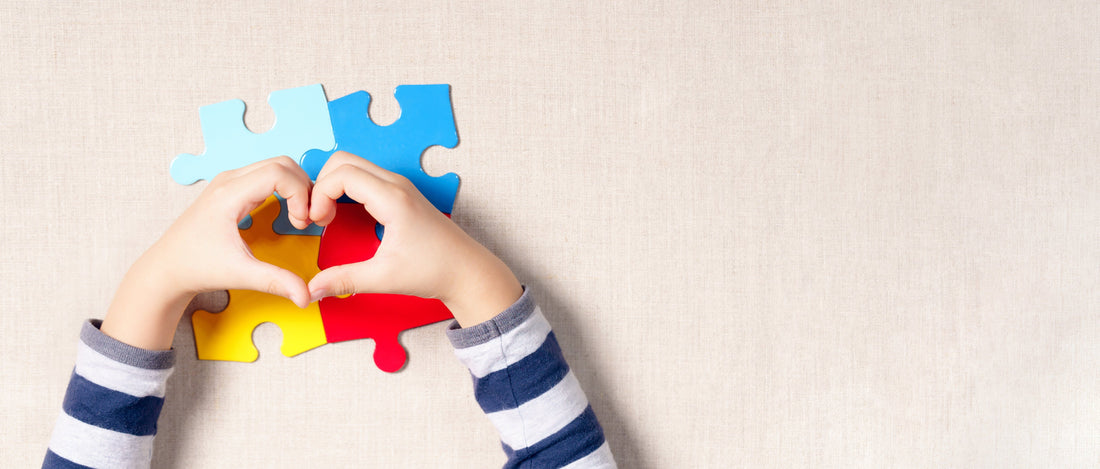While every child feels worried and stressed at times, for children with autism, this worry and stress may lead to debilitating anxiety. Children with autism tend to become anxious more frequently and intensely, often over seemingly small matters, such as a slight change in routine or an unfamiliar bodily sensation. Whatever the cause of anxiety may be, parents often feel helpless in stopping what they know this anxiety could bring: an emotional meltdown or outburst, trouble sleeping, or maybe withdrawal. If this sounds familiar, find out how to reduce anxiety in your child with autism, the types of anxiety to look out for, and lastly, how to cope as a parent.
Is Anxiety Common in Children with Autism?
A meta-analysis found that the prevalence of at least one anxiety disorder among autistic children was 39.6 percent.1 Studies show that older children are more at risk for generalized anxiety, while younger children tend to struggle most with separation anxiety disorder.2 Some of the most common triggers of anxiety for children with autism include:3
-
Changes in routine, such as a substitute teacher filling in for usual teacher
-
Sensory sensitivities like bright lights and loud noises
-
Changes in environment, like a new house or new classroom
-
Fear of specific situations or objects, like the dentist’s office, or balloons
-
Unfamiliar social situations like a birthday party with new friends
-
Times of transition
Types of Anxiety & What to Look For
In a study, 108 high-functioning children with autism enrolled in treatment trials for anxiety, almost all (91.6 percent) met criteria for two or more anxiety disorders, with greatest prevalence of social phobia (41.7 percent) and generalized anxiety disorder (25.9 percent). Other types of anxiety that affect children with autism include:
-
Specific phobias
-
Panic disorder
-
Obsessive compulsive disorder
-
Separation anxiety disorder
If you’re unsure if your child is feeling anxious, look for following signs:
-
Trouble falling or staying asleep
-
Meltdowns or emotional outbursts, which may include self harm
-
Avoiding or withdrawing from social situations
-
Performing rituals, like lining objects up
-
Rocking, spinning or flapping hands
Ways to Help Reduce Anxiety
From helping your child recognize what’s happening to their body when they feel anxious to practicing breathing exercises, there are several ways to help children with autism and their anxiety. Try the following:
-
Ask your child or point out the physical symptoms of anxiety that they or you notice: sweaty palms, pounding heart, stomach upset, flapping hands, etc. This will help them recognize the sensations and be able to communicate them to you when they need help.
-
Cognitive behavioral therapy, which helps children identify threats and speak with a parent or therapist about using logic to change perception of threats.
-
Practice breathing exercises or mindfulness to help root children in the present moment and calm themselves down through their senses.
-
Encourage your child to run, walk, or jump to help them get out of their heads and into their bodies, expelling built up energy at the same time.
-
Incorporate nutritious foods into your child’s diet and steer clear of sugar, which has been shown to worsen anxiety.4
-
Set limits on screen time, which has also been linked to anxiety symptoms.
-
While anxiety can also interfere with your children with autism's sleep patterns, lack of sleep can also make anxiety worse, creating a cycle of unrest and irritability. Practice good sleep hygiene to ensure this cycle gets broken and your child gets the sleep they need.
-
Try Brillia, a non-prescription natural anxiety medication for children designed to help reduce feelings of anxiety, stress, and excitability. Its targeted ingredients contain antibodies to the brain-specific S100 protein (S100B), which regulates many different intracellular and extracellular brain processes. Brillia works by stopping the S100B protein from acting in the body, thus regulating levels of anxiety. Many parents who give Brillia to their children report back that there are fewer meltdowns, less aggressive reactions and are better able to express their emotions. Brillia also does not have contraindications, so it can be added to other supplements or medications without worry.
Coping as a Parent
No matter how skilled you become in noticing the signs of your child’s anxiety and practicing different techniques to help them, don’t forget to take care of yourself too. Remember that your goal is to help your child manage their anxiety, not eradicate it. If you notice it bubbling up despite your best efforts, try not to be too hard on yourself. If your child with autism struggles with anxiety, practice the following coping strategies:
-
Practice mindfulness and relaxation techniques such as yoga, meditation, and breathing exercises. Your child will likely benefit from seeing you model this healthy behavior.
-
Make sure you get enough sleep at night and resist the urge to drink caffeine or look at screens too close to bedtime, which may interfere with sleep.
-
Practice positive self-talk, which may include commending yourself for the hard work you do on behalf of your child.
-
Maintain family traditions and rituals. Your child will enjoy the predictability of Sunday night family walk or a summer getaway to that cabin you all love, and you strengthen your family bonds at the same time.
-
Seek support from family and friends. You don’t have to do this alone. If you don’t live near family and have no friends that can help, there are respite care options to help you get the break you need. It’s important to remember that you can help your child best when you’re pouring from a full cup.
We’ll share helpful tips, the latest studies and personal experiences.


 Improve focus and clarity.
Improve focus and clarity.


